The Complete Guide to Advertising on Instagram
So you’re running paid search and display ads through Google, you’re advertising on Facebook, LinkedIn, Twitter, and even some niche industry-related social sites. Perhaps you’re even running some guerilla advertising campaigns, or commercials through NPR. But for some strange reason, you dismissed Instagram, unsure if it would yield ROI.
Well, I’m here to inform you that today is not the day to ignore Instagram! While Instagram may be younger, with fewer users, than its parent company Facebook, Instagram is the breakout star of the family who everyone wants to sit next to at the Thanksgiving table. Instagram provides a platform to tell visual stories through various ad formats, and many advertisers have seen this channel yielding higher ROI in comparison to their other advertising campaigns.
Today Instagram has 800 million active users, according to Statista, and the rate of rapid growth it has seen since 2013 is pretty astounding. Just check out the graph below.
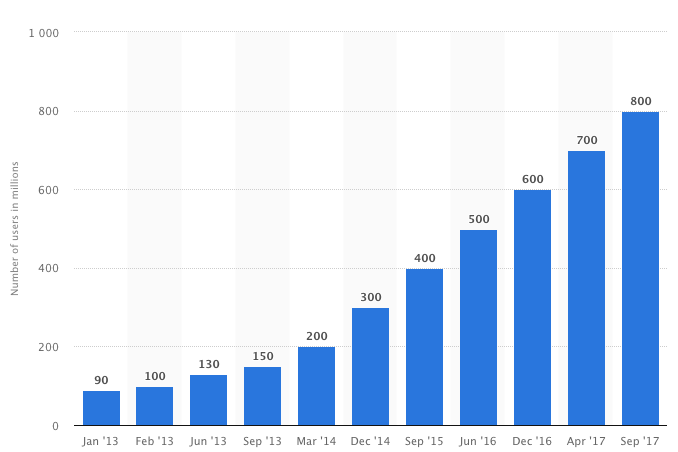
But with so many active folks scrolling through their feeds at all hours of the day, how in the world can a little business like yours stand out?
This is where Instagram advertising comes into play. Similar to Facebook, with popularity comes clutter, and breaking through that clutter organically to make a real impact can feel nearly impossible. To focus on the right people, at the right time, with the right message and imagery, Instagram ads are your powerful vehicle to do just that…
In this guide you’ll learn everything you need to know to get started with an Instagram advertising campaign.
<<Short on time? Get our free All-Star Playbook to Online Advertising, to read later.>>
What Is Instagram Advertising?
Instagram advertising is method of paying to post sponsored content on the Instagram platform to reach a larger and more targeted audience. While there are many reasons a business or individual may decide to advertise, Instagram advertising is often utilized to grow brand exposure, website traffic, generate new leads, and move current leads down the funnel (and hopefully towards converting).
Since Instagram is such a visual platform, text ads are not a thing here. Rather you need an image, set of images, or video (which can be accompanied by text) to reach your audience with Instagram ads.
The exciting part? Instagram advertising works! In March 2017, over 120 million Instagrammers visited a website, got directions, called, emailed, or direct messaged to learn about a business based on an Instagram ad. According to Instagram, 60% of people say they discover new products on the platform, and 75% of Instagrammers take action after being inspired by a post.
Similar to Facebook ads, throwing some money behind a post will lead to more exposure for your brand, as well as more control over who can see your post.
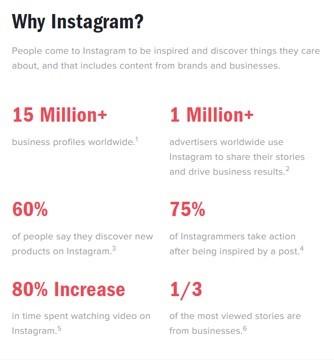
For more fun facts about Instagram, check out this post.
Is Instagram Advertising Right for Your Business?
This leads to the obvious question: Who is on Instagram? Is it just teenagers taking selfies? Or 20-somethings looking for recipes? What about older populations? Are they “gramming” their grandchildren?
Unfortunately for all you marketers targeting the grandparent demographic, Instagram does tend to skew towards a more youthful audience, with the largest percentage of users falling in the age range of 18-29 (55%), then between 30-49 years-old (28%). Only 11% of Instagram users are between the ages of 50-64, and just 4% are adults over 65.
According to Hootsuite, the majority of Instagram users live in urban areas (32%), 28% of users live in the suburbs, and 18% of users in the country. While there are more women on Instagram than men, the gender gap is not as large as it once was.
If this doesn’t sound like the audience you’re targeting, you still should not dismiss the social network as a useless opportunity. Similar to what happened with Facebook, more and more adults over 34 will likely be hopping on the Instagram bandwagon as the platform continues to grow. Also, if you are working with the 4% of adults over 65, you can always target that demographic directly…
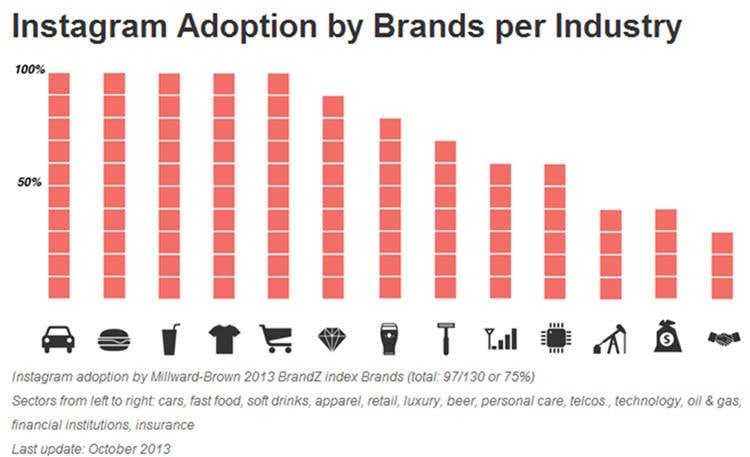
Similar to many other social advertising platforms, Instagram gives you the granular control to target specific genders, age ranges, locations, interests, behaviors, and more. You can even target a custom or lookalike audience so you’re showing ads only to your direct list of leads or those who have a similar makeup.
What advertisers should really latch onto is the fact that Instagram uses Facebook’s demographic data to serve up ads to the appropriate parties. This makes the tool super valuable for advertisers looking to target a niche audience, because Facebook already has a thorough history and thorough demographic targeting options.
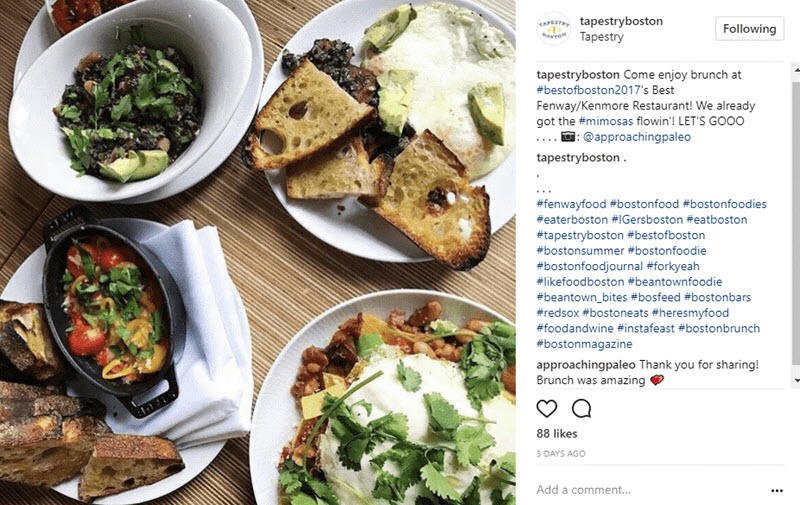
Instagram advertising can be especially powerful if you’re in a visual or creative industry, such as the restaurant business or craft marketing.
How Much Do Instagram Ads Cost?
This is a tricky question to answer, as costs are based on a variety of factors, and as you may have suspected these factors are not all revealed to us by the platform. The model is based on CPC (cost-per-click) and CPM’s (cost per impressions), and prices are determined according to Instagram’s ad auction.
“The cost of Instagram ads are influenced by many factors — everything from your audience to your ad feedback,” says Andrew Tate from AdEspresso. “There’s a lot that goes into understanding how to advertise on Instagram.”
AdEspresso recently dug into $100 million worth of Instagram ad spend in 2017, and found that the average cost per click (CPC) for Instagram ads in Q3 ranged between $0.70 and $0.80. While this is a helpful benchmark it will of course vary depending upon the auction, audience, competition, time of day, day of week, etc.
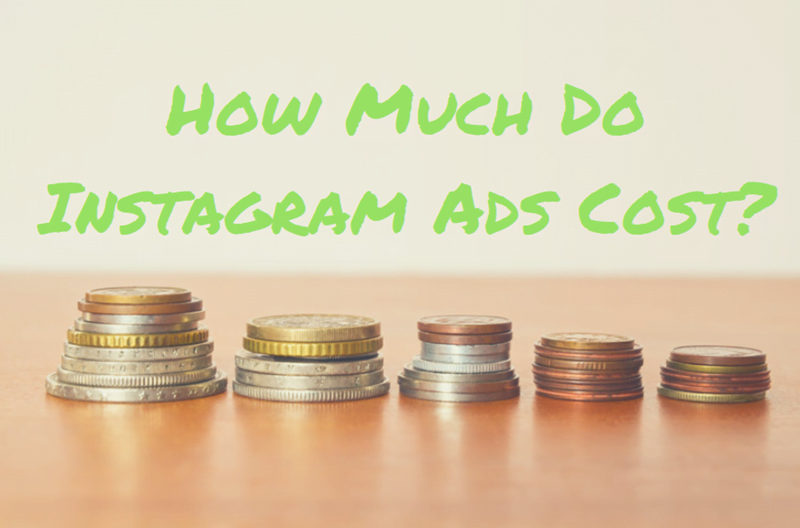
Some advertisers find that Instagram ads often have higher engagement, but this can cost them. According to Keith Baumwald, founder of Leverag Consulting, Instagram ads costs are slightly higher in cost than Facebook ads. Baumwald claims that since the ads are so highly targeted you could end up paying as high as $5 a CPM.
On the bright side, advertisers do have control over how their budgets are allocated. For instance, you can choose between a daily budget to limit the amount spend per day or a lifetime budget where you would set up your ads to run for a length of time until the budget is depleted.
Other ways to control your Instagram ad spend include setting your ad schedule (for instance, you can specify certain hours of the day you want your ads to run), setting your ad delivery method (there are three options: link clicks, impressions, and daily unique reach), as well as setting your bid amount (manual vs. automatic).
6 Easy Steps to Start Advertising on Instagram
Learning the ins and outs of a new advertising platform might seem overwhelming at first. The good news here is that if you’re advertising on Facebook, there isn’t much to learn. In fact, Instagram ads can be configured right through Facebook Ad Manager.
If you’re not advertising on Facebook, don’t fret. We’ll walk you through the process below, and there is also the option to create some simple ads directly within the Instagram app.
Advertisers who are more advanced or running a relatively large ad set can also chose to configure their ads through Power Editor or Facebook’s Marketing API. Instagram Partners is also available for businesses who need to buy and manage multiple ads, manage a large community, and deliver content at scale.
For this post, we’ll focus on creating ads through Facebook Ad Manager, which is the most common method due to its ease-of-use and the ability to customize these ads to a higher degree than what is possible within the app itself. While configuring Instagram ads is not overly complex, there are quite a few steps to be aware of. Starting with…
1. Navigate to Facebook’s Ad Manager
To navigate to ad manager within Facebook, simply follow this link, assuming you’re logged in to the appropriate Facebook account.
Note: There is no specific Ad Manager for Instagram; Instagram ads are managed through the Facebook Ads UI.
2. Set Your Marketing Objective
Now for the fun part, choosing your campaign goal. Luckily, the goals are named in a self-explanatory manner. Need more traffic? Select the traffic goal. Looking to increase brand awareness? Choose the brand awareness goal. You get the gist.
One thing to be aware of is that Instagram ads only work with the following goals:
- Brand awareness
- Reach
- Traffic (for clicks to your website or to the app store for your app)
- App installs
- Engagement (for post engagement only)
- Video views
- Conversions (for conversions on your website or app)
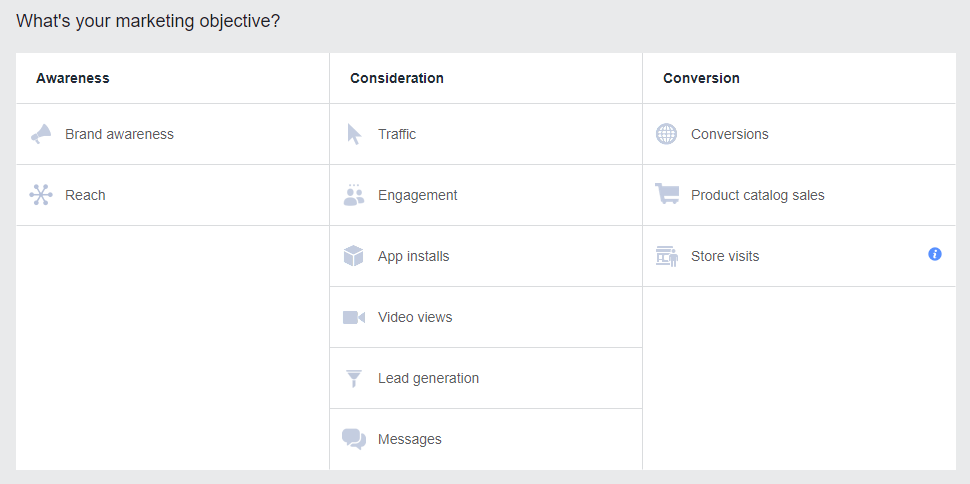
While these goals are intuitive, some come along with a few additional configuration steps, which I’ll run through for you.
Brand awareness: Take an extra-long lunch. No extra steps here! This is the most standard goal that will try to show your ads to more potential people likely to be interested. How does Instagram determine this? It’s a secret, but this goal will likely expose some new and relevant folks to your brand.
Reach: If reach is what you’re looking for (as in maximizing how many people see your ads) then you’ll just need to be sure to select your Instagram account when creating the ad itself. It’s also worth noting that if you’re looking to run an Instagram Story ad “reach” is currently the only objective you can chose. The cool thing about this goal is that you can take advantage of Facebook’s split testing feature, which allows you to split test two ads to see which one yields more installs. NOTE: Split testing is also available for Traffic, App Installs, Video Views, Lead Generation, and Conversion goals.
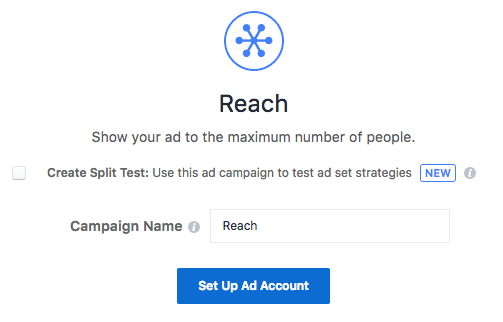
Traffic: If you’re looking to send more people to your website or app store to download your app, this is the appropriate goal for you. The only additional steps you’ll need to take is choosing between those two options, then enter the URL of choice, and let the traffic jam in!
Engagement: Who doesn’t want more likes, shares, and overall engagement? If your goal is engagement, one thing to note is that you currently can only pay to play for “post engagement” on Instagram. Facebook will allow you to pay for “page engagement” and “event responses,” but this is not currently available to Instagram.
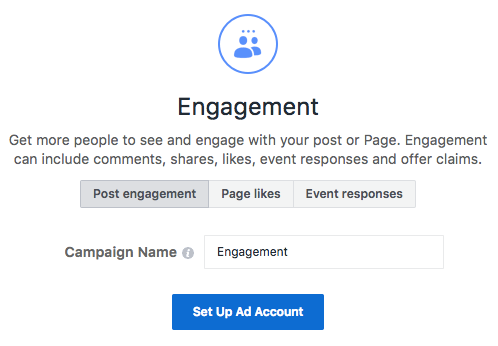
App Installs: If your main goal is app installs, you’ve come to the right place. To configure this you’ll need to choose your app from the app store during set-up.
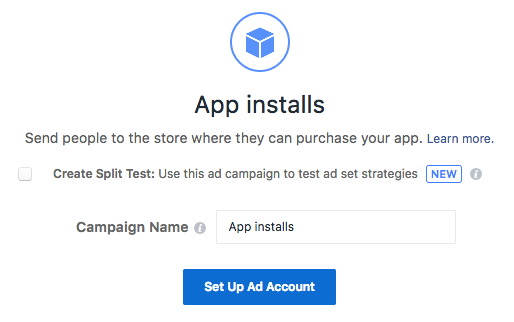
Video Views: Videos are often an investment of time and money, so not promoting your video on Instagram would be like buying a plane ticket to Hawaii, and leaving it in your desk. Luckily, this goal is very straightforward, and doesn’t require additional setup steps.
Lead Generation: Who doesn’t want more leads? If that is your main goal this objective is for you. Just note that lead generation ads do not provide all of the same pre-filled fields as Facebook. Instagram currently only supports email, full name, phone number, and gender. These ads also have more of a barrier than Facebook lead generation ads, since when leads click to open the ad they’ll need to click through to fill out their information. On Facebook, leads can fill out their information without all the additional clicking. The other set-up piece is that you’ll need to create a lead form when creating your ad. If you’re interested in learning more about lead ads check out this post.
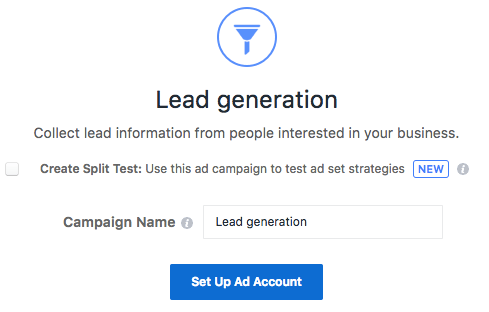
Conversions: Last, but certainly not least, we have conversions. This goal allows you to drive your leads to take action and convert on your website or within your app. The additional set-up here requires you to configure either a Facebook pixel or app event based on the website or app you’re looking to promote; this will allow you to track conversions.
3. Configure Your Target Audience
Now that you’ve selected your objective, you need to target the appropriate audience to get your ads in front of the right people. This is the true beauty of Instagram ads since you’ll be using Facebook’s depth of demographic knowledge to reach the right people.
If you’ve done this for Facebook ads before you likely already have several audiences built, and are quite familiar with the process. If you’re new to this process here’s a run-down of your targeting options, which you can layer to get a precisely targeted audience. (For instance if you want to target women, in New York, between the ages of 19 and 65, who are interested in yoga and health food, you can do just that!)
Location: Whether you want to target a country, region, state, city, zip code, exclude or include certain places, location targeting will allow you to do all of this and more.
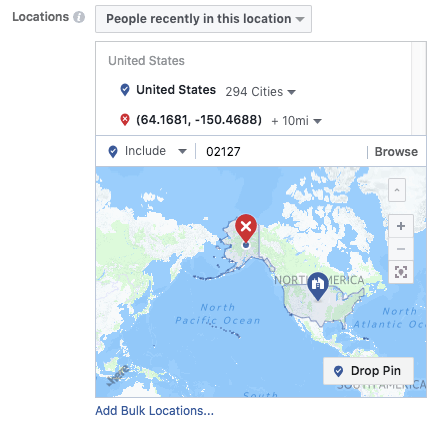
Age: Allows you to target ranges from age 13 to 65+
Gender: Choose between all, men, or women
Languages: Facebook recommends leaving this blank unless the language you’re targeting is not common to the location your targeting.
Demographics: Under “Detailed Targeting” you’ll find demographics, which has several sub-categories with even more sub-categories under those. For instance, you can target “Demographics” > “Home” > “Home Ownership” > “Renters.”
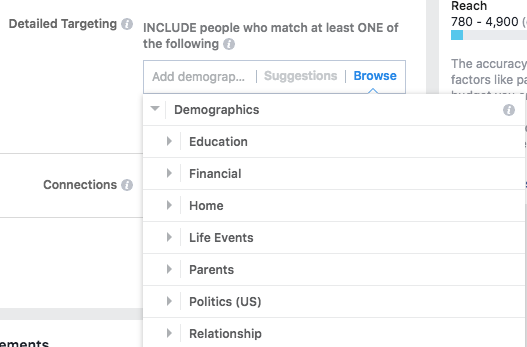
Interests: Interests is also under “Detailed Targeting” with multiple sub-categories to dig into. For instance, if you’re looking for people interested in distilled beverages, science fiction movies, and aviation, those options are available for you!
Behaviors: And yet another “Detailed Targeting” option with multiple sub-categories to explore. Whether it be purchasing behaviors, job roles, anniversaries, or other behaviors the options seem endless.
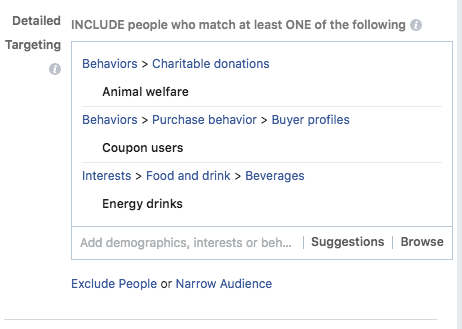
Connections: Here you’ll be able to target people connected to your page, app, or event.
Custom Audience: Custom audiences let you upload your own list of contacts allowing you to target leads already in your pipeline or customers who you’re looking to upsell.
Lookalike Audience: If your custom audience is tapped to their potential, create a lookalike audience. This will allow Instagram to find people who have similar traits to your other audiences.
Once you’ve configured your audience, Facebook will also provide you with a guide to how specific or broad your audience is (like the one below).
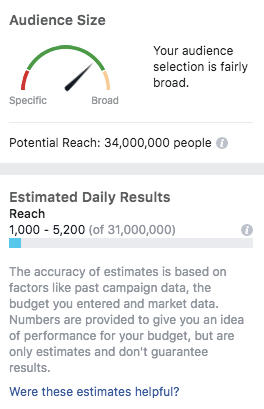
This is an important tool to pay attention to, because you want to strike a balance of your audience not being too huge (since it’s likely not targeted enough), but also not being too specific (in the red zone), since there may not be many people (if any) to reach with so many layered targets.
4. Choose Your Placements
Now that you’re targeting your ideal demographic, it’s time to choose your placements! This is critical if your goal for a campaign is to only show ads on Instagram. If you choose to ignore this step, Facebook will allow your ads to appear on both platforms.
This isn’t necessarily a negative thing, but if you have content that you’ve created specifically for Instagram, you should select “Edit Placements” here.

From here you can specify Instagram as a placement, as well as if you’d like these ads to appear in the feed and/or the stories section of the platform.
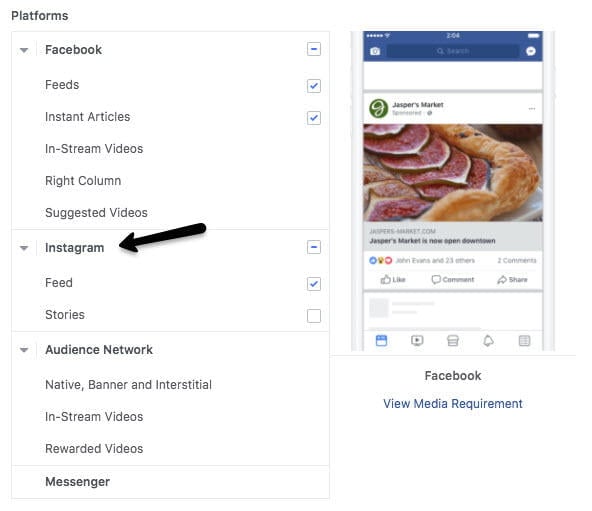
5. Set Your Budget and Ad Schedule
If you are familiar with how budgets work through Facebook, AdWords, and other digital advertising platforms, this step should not be overly challenging for you. If not, then take a deep breath; while you might not know exactly where to set your daily or lifetime budget when running your first Instagram ad campaign, this comes with trial and error, as well as experience. And the good thing is you have the control to pause or stop your campaign at any time if you feel your budget is not being properly allocated.
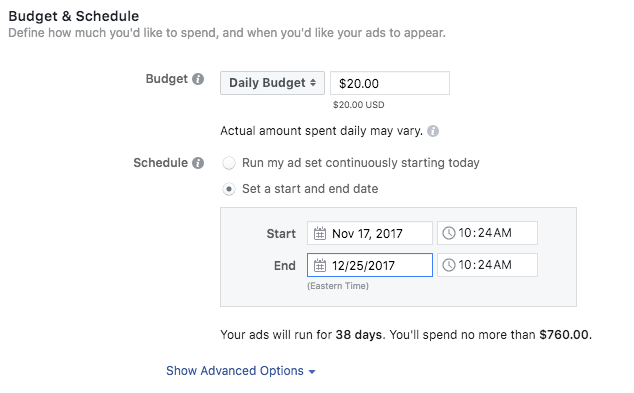
So should you go daily or lifetime? While I typically lean towards daily budgets since it guarantees your budget won’t be spent too quickly, lifetime budgets allow you to schedule your ad delivery, so there are pluses and minuses to both options. I would also advise exploring the advanced options pictured below. For instance, if you bid manually you’ll have the control to decide how much each lead is worth to you.

As mentioned above, you can also run an ad schedule to target specific times of day and days of the week when you know your audience is most active on the platform. This is a super valuable way to optimize your budget. As a reminder, this is only available for those using a lifetime budget.
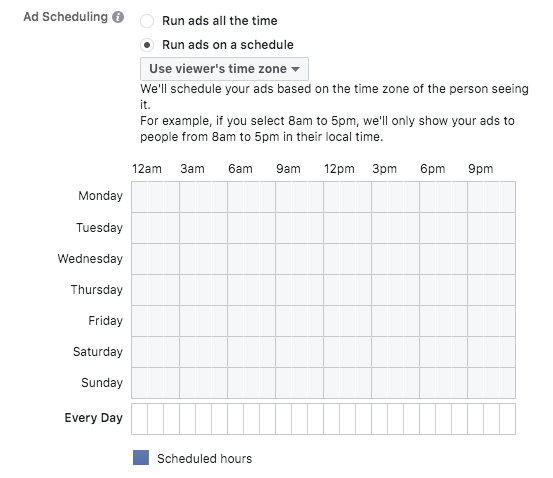
6. Create Your Instagram Ad
Now it is time to create your Instagram ad!
Hopefully after taking the steps above you already have some content in mind for the ad you are looking to promote. This part of the set-up may look different depending upon your campaign objective, but you’ll always have a few ad format options to choose from. So as a next step, let’s discuss the various ad formats available.

Instagram Ad Formats
If you are a bad decision-maker, you may want to brace yourself. Instagram has six ad formats to choose from. (This is way fewer than Facebook!) Two of those are for Instagram stories, which appear at the top of the feed in a manner similar to Snapchats. The other four are formats designed for the Instagram feed, which are more commonly used by advertisers.
#1. Image Feed Ads
This is your most standard ad format, and likely the one you see most often scrolling through your own feed. These ads are single images that will appear as a native experience as your target lead is scrolling through their feed. The lovely thing about these ads is that they don’t feel like ads, especially when done well.
Here are some additional details to be aware of:
Technical Requirements
- File type: jpg or png
- Maximum file size: 30MB
- Minimum Image Width: 600 pixels
- Image Ratio: 4:5 minimum, 16:9 maximum
- Text length: 2,200 maximum (*although Instagram recommends staying below 90 for optimal delivery)
- Hashtag Number: 30 maximum (*you can add additional in the comments)
Supported Objectives
- Reach
- Traffic
- Conversions
- App Installs
- Lead Generation
- Brand Awareness
- Post Engagement
- Product Catalog Sales
- Store Visits
Supported Call-to-Action Buttons
- Apply Now
- Book Now
- Call Now
- Contact Us
- Get Directions
- Learn More
- Get Showtimes
- Download
#2. Image Story Ads
Same concept as above, but these are for Instagram stories! Instagram Story ads details below:
Technical Requirements
- Image Ratio: 9:16 recommended
- Minimum Image Width: 600 pixels
Supported Objectives
- Reach
- Traffic
- Conversions
- App Installs
- Lead Generation
Supported Call-to-Action Buttons
- Apply Now
- Book Now
- Contact Us
- Download
3. Video Feed Ads
Bring your ad to life with a video! If you’ve put the time in to make a quality video, then you should absolutely be promoting it through your Instagram feed.
While most video files are supported by Instagram, they recommend using H.264 compression, square pixels, fixed frame rate, progressive scan, and stereo AAC audio compression at 128kbps+ (PRO TIP: if your video is not meeting these requirement you can always run it through the video transcoder, Handbrake, to make these adjustments).
Technical Requirements
- Video Resolution: 1080 x 1080 pixels (at least)
- Maximum file size: 4GB
- Video Ratio: 4:5 minimum,16:9 maximum
- Video Duration: 60 seconds maximum
- Video Captions: optional
- Image Ratio: 4:5 minimum, 16:9 maximum
- Text length: 125 characters maximum recommended
- Hashtag Number: 30 maximum (*you can add additional in the comments)
Supported Objectives
- Reach
- Traffic
- Conversions
- Lead Generation
- Brand Awareness
- Post Engagement
- Store Visits
Supported Call-to-Action Buttons
- Apply Now
- Book Now
- Call Now
- Contact Us
- Download
#4. Video Story Ads
This is another great place to run video ads, because stories are where users often expect to see videos, so the “selling” part of advertising doesn’t feel as forced. The recommended video specs for uploading are the same as listed above, and here are some additional details to keep in mind!
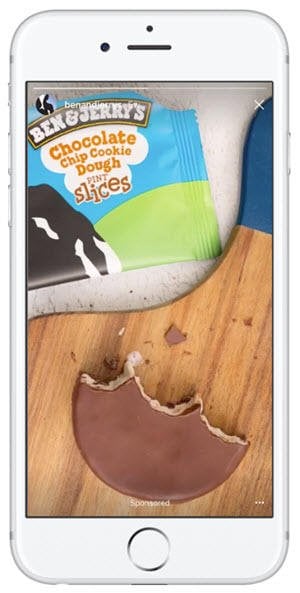
Technical Requirements
- Video Resolution: 1080 x 1920 pixels (at least)
- Maximum file size: 4GB
- Video Ratio: 9:16 maximum
- Video Duration: 15 seconds maximum
- Video Captions: not available
Supported Objectives
- Reach
- Traffic
- Conversions
- Lead Generation
- App Installs
Supported Call-to-Action Buttons
- Apply Now
- Book Now
- Call Now
- Contact Us
- Download
#5. Carousel Feed Ads
Next we have carousel feed ads. How fun are these! This format allows you to show a series of scrollable images rather than just one single image.
This ad type is great for very visual brands, like those in the food industry, furniture sellers, clothing options, vacation destinations, car dealerships, etc. But they’re not only for “sexy” businesses; they can also work to humanize your brand or show off your culture by showing the people behind your software or financial company.
The carousel format allows you to choose from up to 10 images within a single ad, each with its own link. Video is also an option for these ads.
Technical Requirements
- File type: jpg or png
- Maximum file size: 30MB
- Minimum Image Width: 600 pixels
- Image Ratio: 4:5 minimum, 16:9 maximum
- Text length: 2,200 maximum (*although Instagram recommends staying below 90 for optimal delivery)
- Video Duration: 60 seconds maximum
- Hashtag Number: 30 maximum (*you can add additional in the comments)
Supported Objectives
- Reach
- Traffic
- Conversions
- Brand Awareness
- Lead Generation
- Product Catalog Sales
Supported Call-to-Action Buttons
- Apply Now
- Book Now
- Contact Us
- Call Now
- Download
#6. Canvas Story Ads
And last, but definitely not least, we have the newest addition to the ad format family, Canvas ads. There ads are truly immersive, allowing advertising to create a 360 VR experience within their story. They’re only supported via mobile devices, and extremely customizable for the advertiser, but you will need some technical chops. These ads work with image, video, and carousel. Check out this guide to learn more about Canvas ads.
Technical Requirements
- Minimum Image Width: 400 pixels
- Minimum Image Height: 150 pixels
Supported Objectives
- Reach
- Brand Awareness
- Traffic
- Conversions
- Lead Generation
- Post Engagement
- Video Views
- Store Visits
Supported Call-to-Action Buttons
- Apply Now
- Book Now
- Contact Us
5 Instagram Advertising Best Practices
Now that you’ve got the basic principles of Instagram advertising down, it is time to get the highest ROI possible by following these Instagram best practices to create great Instagram ads.
#1. Instill Each Ad with Personality
Whether it be a funny goof, an emotional video, or just an intriguing image showing off your culture, if your Instagram post doesn’t feel humanized then you will not reach your engagement potential.
People use Instagram to be entertained, amused, or amazed. Whether it’s while you’re on the train to work or when you are unwinding after a long day of work, no one is looking to hop on Instagram to see a boring corporate advertisement. This is why appealing to emotions is always the way to go. Check out this fun post from Shape Magazine as a perfect example.

#2. Make Sure Your Ad Is Contextually Relevant
What works with one social media platform won’t necessarily work with another. For instance, your business likely wouldn’t promote the same content through LinkedIn as they would through Twitter, as the audience is typically in a different state of mind.
The same goes for Instagram. Put yourself in your target buyer’s shoes and be aware of where they are. On Instagram, do you think your lead is likely to download and read your 40 page e-book? Probably not. Ensure your ads do not feel overly sales-driven because this isn’t typically what Instagram is used for.
#3. Use Hashtags…
But don’t just hashtag #food or #love. Get more creative, and do some user research to see which hashtags are more likely to be searched for by your audience. Also, don’t overdo it with hashtags. This can make your post look a bit sloppy and desperate.
The ideal number? TrackMaven analyzed 65,000 posts and found that 9 hashtags is the ideal number for highest post engagement. They also found that longer hashtags often perform better.
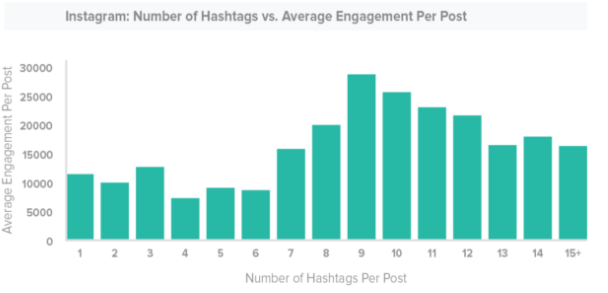
#4. Run a Contest
Promoting a contest or giveaway is by far one of the most effective ways to reach your goals faster with Instagram advertising. Why? Because people love competition and free stuff! What better way to get your audience excited about your brand?
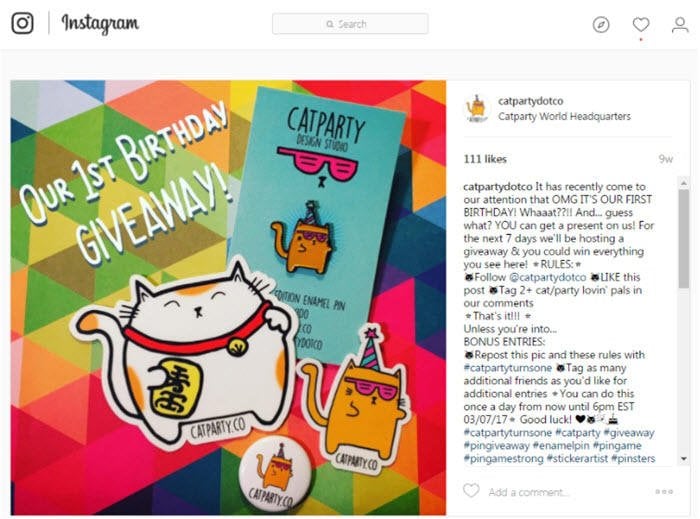
If you need some help with how to go about this, check out this awesome post on how to run an Instagram giveaway from WordStream’s very own Dan Shewan.
#5. Post at Optimal Hours
I spoke a bit about this during the budgeting step of Instagram ad-set up, but using the ad-schedule feature (which is only available with lifetime budgeting) is a great way to get people at the right time.
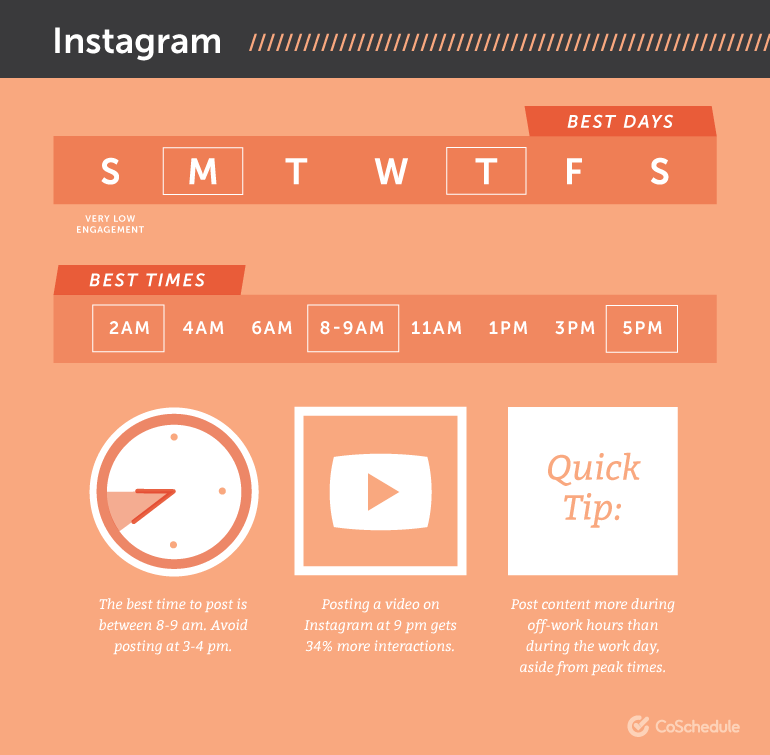
Via CoSchedule
If you know your audience well, this shouldn’t be too hard to determine, but trial and error can also work here. Think about your vertical. If you’re an online retailer, when do people typically shop for clothing online? Or if you’re a car dealership, what days of the week do you see the highest spike in website traffic? Asking these questions is a good place to start.
Without further ado, set forth and advertise on Instagram! This is one platform you should not ignore, and this guide should provide you with enough resources to become insta-famous.
Looking for more help? Check out:



![135 [NOT Overused!] New Year's Instagram Captions & Templates](https://www.wordstream.com/wp-content/uploads/2021/12/new-years-instagram-captions-sparkler-feature.jpeg)




Comments
Please read our Comment Policy before commenting.